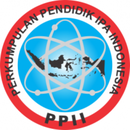Learning Difficulties of the 5th Grade Elementary School Students in Learning Human and Animal Body Organs
Abstract
Keywords
Full Text:
PDFReferences
Brady, K., & Woolfson, L. (2008). What teacher factors influence their attributions for children’s difficulties in learning?. British Journal of Educational Psychology, 78(4), 527-544.
Cakir, M. (2008). Constructivist approaches to learning in science and their implications for science pedagogy: A literature review. International journal of environmental & science education, 3(4), 193-206.
Cavendish, W. (2013). Identification of learning disabilities: Implications of proposed DSM-5 criteria for school-based assessment. Journal of Learning Disabilities, 46(1), 52–57.
Chiappetta, E. L., & Koballa Jr, T. R. (2014). Science instruction in the middle and secondary schools (8th ed.). College of Education Faculty Publications: Pearson.
Chu, H. C. (2014). Potential Negative Effects of Mobile Learning on Students’ Learning Achievement and Cognitive Load--A Format Assessment Perspective. Journal of Educational Technology & Society, 17(1), 12-18.
Cooper, S. A., Smiley, E., Jackson, A., Finlayson, J., Allan, L., Mantry, D., & Morrison, J. (2009). Adults with intellectual disabilities: prevalence, incidence, and remission of aggressive behavior and related factors. Journal of Intellectual Disability Research, 53(3), 217-232.
Cortiella, C., & Horowitz, S. H. (2014). The state of learning disabilities: Facts, trends and emerging issues. New York: National Center for Learning Disabilities, 2-45.
Duschl, R. (2008). Science education in three-part harmony: Balancing conceptual, epistemic, and social learning goals. Review of research in education, 32(1), 268-291.
Fedewa, A. L., Toland, M. D., Usher, E. L., & Li, C. R. (2016). Elementary School Students’ Health-Related Self-Beliefs. International Electronic Journal of Elementary Education, 9(1), 151-166.
Fishman, C. E., & Nickerson, A. B. (2015). Motivations for involvement: A preliminary investigation of parents of students with disabilities. Journal of Child and Family Studies, 24(2), 523-535.
Geary, D. C. (2013). Early foundations for mathematics learning and their relations to learning disabilities. Current directions in psychological science, 22(1), 23-27.
Hale, J., Alfonso, V., Berninger, V., Bracken, B., Christo, C., Clark, E., & Dumont, R. (2010). Critical issues in response-to-intervention, comprehensive evaluation, and specific learning disabilities identification and intervention: An expert white paper consensus. Learning Disability Quarterly, 33(3), 223-236.
Higgins, K., Crawford, L., & Silvestri, S. (2016). Student Perceptions of an Online Mathematics Curriculum Designed for Students with Learning Difficulties. Social Welfare: Interdisciplinary Approach, 2(6), 108-123.
Hofstein, A., & Mamlok-Naaman, R. (2007). The laboratory in science education: the state of the art. Chemistry education research and practice, 8(2), 105-107.
Kaldenberg, E. R., Watt, S. J., & Therrien, W. J. (2015). Reading instruction in science for students with learning disabilities: A meta-analysis. Learning Disability Quarterly, 38(3), 160-173.
Karpudewan, M., et al. (2017). Introduction: Misconceptions in Science Education: An Overview. In Overcoming Students’ Misconceptions in Science (pp. 1-5). Springer Singapore. Singapore: Springer.
Kendeou, P., Broek, P., Helder, A., & Karlsson, J. (2014). A cognitive view of reading comprehension: Implications for reading difficulties. Learning disabilities research & practice, 29(1), 10-16.
Loeb, S., Soland, J., & Fox, L. (2014). Is a good teacher a good teacher for all? Comparing value-added of teachers with their English learners and non-English learners. Educational Evaluation and Policy Analysis, 36(4), 457-475.
Maryani, I., & Martaningsih, S. T. (2015). Correlation between Teacher’s PCK (Pedagogical Content Knowledge) and Student’s Motivation in Primary School. International Journal of Evaluation and Research in Education, 4(1), 38-44.
McLeskey, J., & Waldron, N. L. (2011). Educational programs for elementary students with learning disabilities: Can they be both effective and inclusive?. Learning Disabilities Research & Practice, 26(1), 48-57.
OECD. (2012). PISA 2012 Results in Focus (What 15-year-olds know and what they can do with what they know).Programme for International Student Assessment.
Riggs, I. M., & Enochs, L. G. (1990). Toward the development of an elementary teacher’s science teaching efficacy belief instrument. Science Education, 74(6), 625-637.
Schoenfeld, A. (2009). Learning to think mathematically: Problem-solving, metacognition, and sense-making in mathematics. ColeccioÌn Digital Eudoxus, (7), 19-27.
Takahashi, B., & Tandoc Jr, E. C. (2016). Media sources, credibility, and perceptions of science: Learning about how people learn about science. Public Understanding of Science, 25(6), 674-690.
Wendt, J. L., & Rockinson-Szapkiw, A. (2014). The effect of online collaboration on middle school student science misconceptions as an aspect of science literacy. Journal of Research in Science Teaching, 51(9), 1103-1118.
Refbacks
- There are currently no refbacks.



